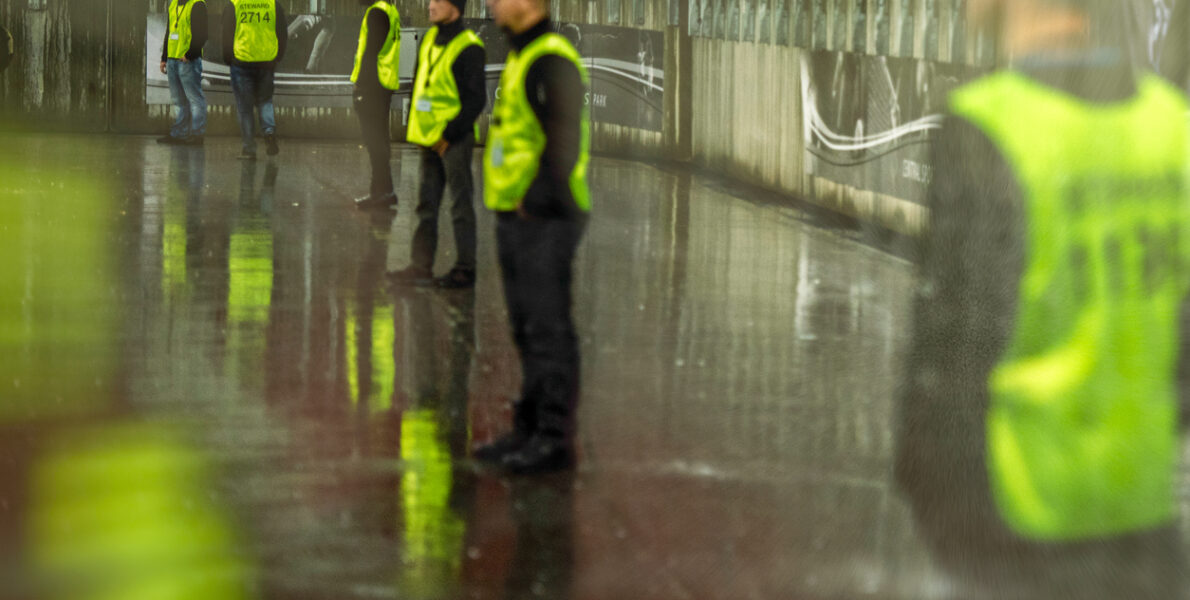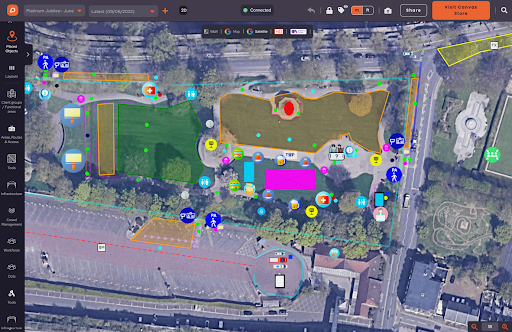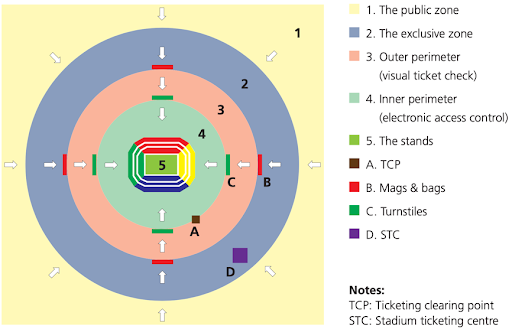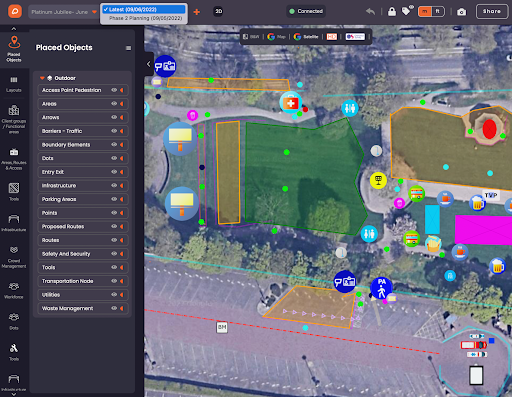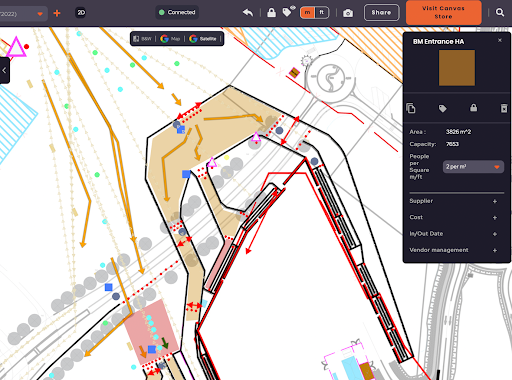As COVID restrictions ease, it is essential that event organisers and planning teams work together to minimise the risks to safety, security and service at events. The consideration of safety, security and service as three interdependent and linked pillars for major international sporting events is enshrined in the Council of Europe Convention (The Saint-Denis Convention). These principles form a requirement on host countries on applying to host major tournaments such as the Olympic Games or Football World Cup. It is essential that in planning for security that the linked pillars of safety & service are considered.
Security Concepts of Operation
In planning for effective security arrangements, it is important to identify the strategic security strategy. In considering security, we are planning to mitigate, minimise or manage threats to security from terrorism, serious crime or other malicious and disruptive behaviour. Security in its widest sense can be considered as the combination of people, processes and technology to enable proportionate and scalable ‘Protective Security measures’ and effective ‘Counter Terrorism Operations’.
Whilst on first sight, responsibility for security, especially Protective Security and Counter Terrorism may be considered the domain of Law Enforcement Agencies, Security Services or Military, it is essential to recognise that all event managers, functional leads, planners and anyone engaged in delivering events play a key role. In short, “security is everyone’s responsibility”. Combining safety, security and service will enable an event to be safe, but also to feel safe. Events that are not secure cannot be considered safe.
In establishing the strategy for security, I always consider three primary considerations, these are:
- National or event threats
- Security by design and planning
- Security operations integration
Why I Use OnePlan for Security Planning
As an international major events and security consultant, I am engaged in safety & security planning at major international events, with national sporting bodies and teams, with Law Enforcement Agencies and through academia. I am engaged in planning, education and operating in major events, combining security concepts of operations with crowd management, event management, contingency planning and incident response.
Prior to 2020 whilst serving within LEA community, I had the privilege of supporting international and national events and operations over 30 years, including complex international coordination and cooperation in delivery. During that time, I planned and operated using a range of disconnected systems, maps and plans.
Since 2019, I have been an active user of OnePlan, initially using the system as part of Interpol International Command Training with Project Stadia. I quickly recognised the potential for integrated planning and broadened my use to other projects.
OnePlan is now the only planning system that I use, the ongoing development and ability to support provide a unique integrated capability for all aspects of security planning and delivery. It is a pleasure to be involved in the wider development of a range of forthcoming specialist security tools and capabilities, the continual evolution in the systems will enable OnePlan and VenueTwin to be adopted by all agencies. This is a positive step and will enable Private Sector to integrate planning with LEA, Security Agencies and Military.
Here you can see part of my portfolio of events & operations in OnePlan. I can easily see an overview of all live plans while planning. The orange highlight reflects an overview of the Platinum Jubilee Case Study.
Security Education
In February, I supported CPD sessions for the Counter-Terrorism Group within the Security Institute, in developing a crowded space case exercise, linked to the Platinum Jubilee. I used OnePlan to underpin elements of planning and layers of security through people, processes and technology.
This screenshot of OnePlan shows a combination of ‘safety, security and service’ tools at a relatively small but iconic crowded space event. The ability to overlay across mapping and plot people (dots), processes and technology alongside event overlay is important.
When planning a concept of operations for security, I advocate a layered approach to provide strength in depth, this is reflected in international security guidance, most of which is freely available, as outlined in earlier articles. These principles support in deterring, detecting, delaying, mitigating and responding to threat activity (UK CPNI).
The FIFA illustration is taken from the FIFA Stadium Safety & Security Regulations. The UK SGSA Guide to Safety at Sports Grounds reflect these principles.
For other crowded space or publicly accessible locations, planers can adopt the same principles, UK CPNI guidance recommends a layered approach including:
- Beyond the perimeter (Consider host city or town, Last Mile or Zone Ex)
- At the perimeter (Consider perimeter fences, access control, pedestrian or vehicle search areas, search and screen, stand-off space, etc)
- On the site (all overlay, CCTV, Lighting, personnel)
- Buildings (Or areas of operation/ playing surfaces)
- Assets (People, property, or information)
Temporary Layers
Major events or complex security operations are also layered in time, with definitive phases of operation, often captured in a ‘run sheet’. OnePlan can be used to cater for all of these, allowing for a planning ‘timeline’ and audit trail to be developed.
Continuing with the same plan, the screenshot below shows a ‘version control’ box and the menu of types of people processes and technology deployed.
OnePlan also integrates crowd management tools such as static and dynamic capacities, flow rates and DIMICE features. For crowd specialists it is extremely useful to be able to include:
- Densities
- DIMICE
- RAMP
- Crowd Dynamics and Crowd Congestion
Represented in a single plan, this enables a highly visual representation to support in planning, approval and operations.
These features are illustrated below in a live example for a queue management system for a transport node, this image shows a CAD drawing being used to aid planning:
Security Tools
OnePlan has a comprehensive and ever-developing set of tools and applications that I use to support planning. Integrating with crowd management tools, I can plot routes, distances and stand-off space, this enables for specialist capabilities such as Hostile Vehicle Mitigation. Vehicle Dynamic Assessments to be considered, however, it is important to engage or consult with specialists in deploying complex protective security options.
VenueTwin
VenueTwin is the 3D version of an integrated planning tool, it is widely used by tournaments, venues and international clients. Whilst its application for general planning and remote reconnaissance is proven, the application for security is equally important. The ability to conduct 3D exact visual reconnaissance and planning, with environmental simulation set to time of day or day of year is phenomenal. Complex protective security planning can be conducted in collaboration, without repeated visits or time on the ground. For sustainability and economic factors this is a ‘game changer’ for complex security concepts of operations.
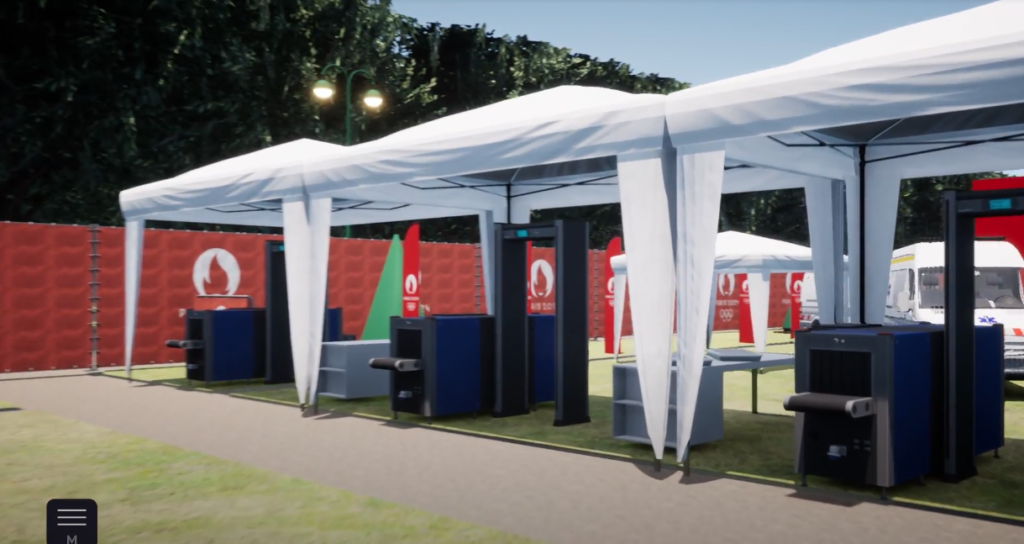
Within the system exact imagery from security technical features such as access control, walk through metal detectors and camera systems can be plotted.
Here’s an example of a camera deployment. The ability to include specific camera capabilities, field of view, pan tilt zoom, image intensification and coverage enable for comprehensive technical surveys, mitigation of poor coverage and the proactive ability to counter hostile reconnaissance.
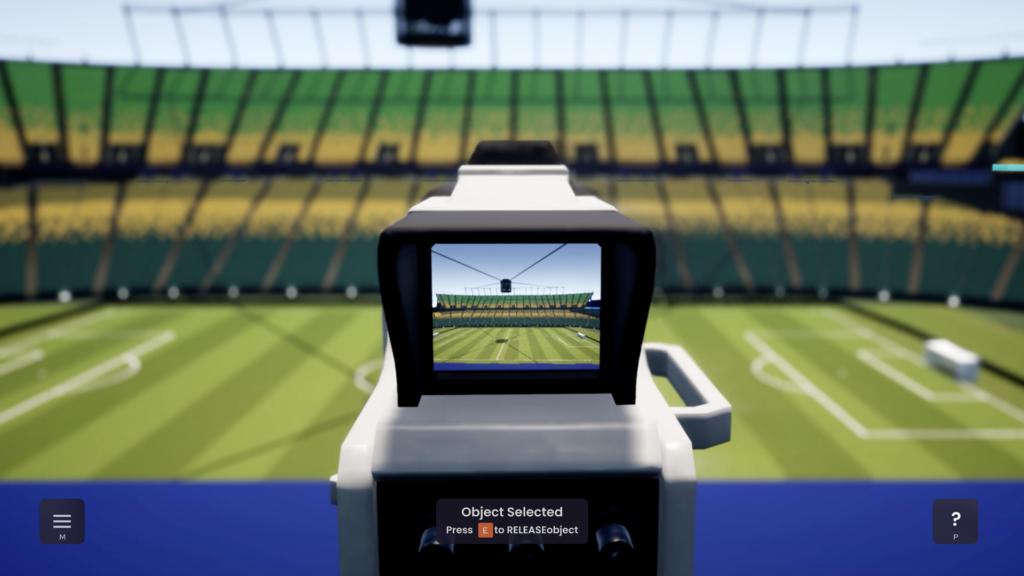
Whilst some of the examples relate to major international events, both systems enable a systematic approach, flexibility and scalability. That is why amongst the thousands of events planned range from small village fetes to major international tournaments. These and any security operation in between can be developed with efficiency and ease.
If readers would like further information on this article or would like to consider the specialist consultancy services available, please contact Pete Dalton or Prof Chris Kemp at Mind over Matter Consultancy.
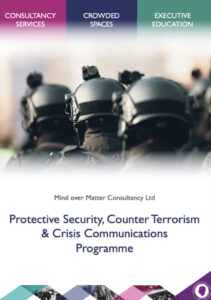
Equally, OnePlan can support in providing a complete system to support collaborative planning and event management. OnePlan has been widely adopted by several USA organisations and venues. The collaborative event planning platform can support in all aspects of event delivery, including integrated plans catering for crowded space management, physical, personnel and technological measures.
If you’re interested in learning more about OnePlan for your security needs, try OnePlan today free.

